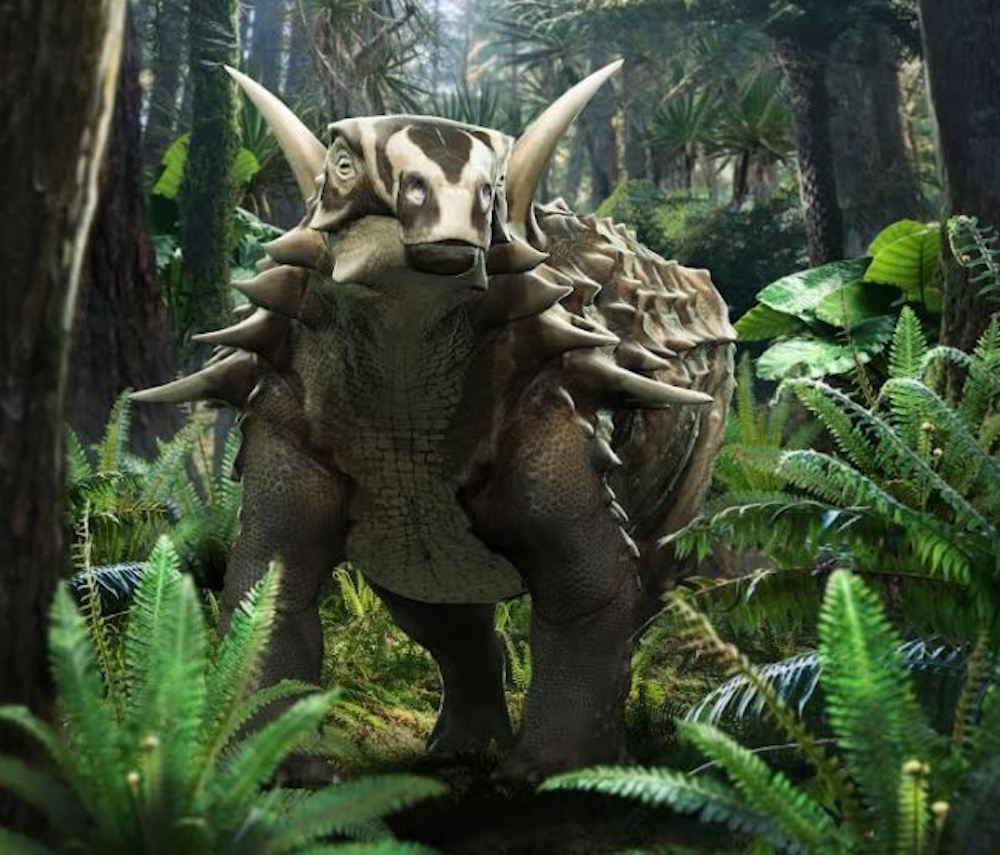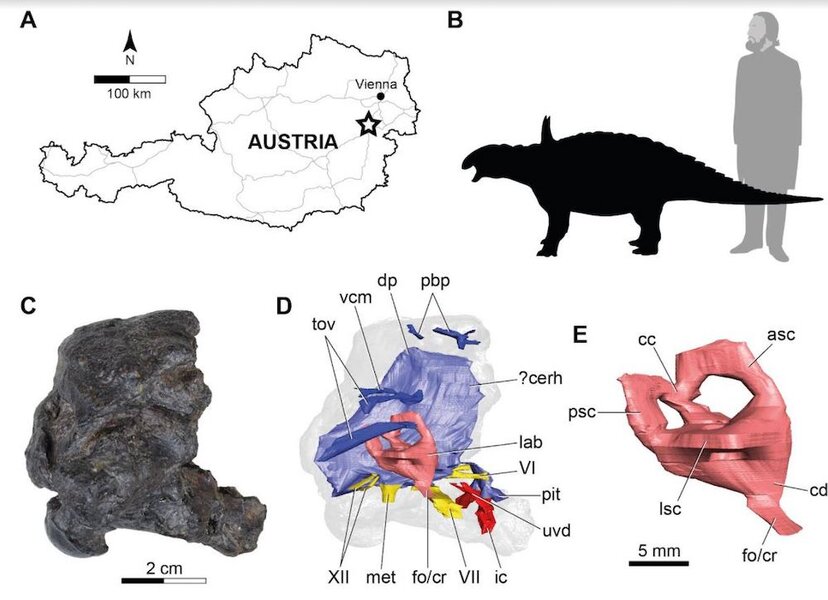Create a free profile to get unlimited access to exclusive videos, sweepstakes, and more!
Some ankylosaurs might have been nearly deaf, leading a slow and silent life
Ankylosaurs weren't big talkers, which is good because no one was listening.

Ranking dinosaurs in order of awesomeness is a fool’s errand, but if we had to comprise a list, ankylosaur would be near the top. Known for their squat posture and armored, battle-ready bodies, ankylosaurs look like the sort of animal who might want a hug but might also want to break you in half.
Most famous among ankylosaurs are those of the spiked and clubbed tail varieties, but they make up only half of the picture. There are actually two closely related groupings, the ankylosaurids and the nodosaurids. While the first group tended toward violent looking Dark Age warrior weapons, nodosaurids took a more defensive approach. Instead of weaponized tails, they had incredibly armored bodies with an array of spiked features known as osteoderms along their neck and shoulders.
Illustrations and fossil remains might suggest an animal primed to seek out battle between episodes of munching on leaves, but recent research suggests at least some ankylosaurs might have led a quieter kind of life.
New research carried out by Marco Shade from the Institute of Geography and Geology at the University of Greifswald, and colleagues from the University of Vienna, takes a detailed look at fossil brain cases in the hope of figuring out what life might have been like for these ancient herbivores. Their findings were published in the journal Scientific Reports.
The team used photogrammetry — a process which utilizes a number of differently angled photographs — and micro-CT scans to create an interior brain case model of one nodosaurian known as Struthiosaurus austriacus.
“At the end, we came up with 3D models of the brain case cavities that contained the brain, nerves, neurovascular canals, and inner ears,” Shade told SYFY WIRE.
S. austriacus measured about three meters in length and lived in the late-Cretaceous, roughly 80 million years ago, in what is now Austria. Examination of the brain case model allowed the team to make informed speculation about what sorts of sensory ability these animals had, and what sorts of lives they might have lived. While the shape and structure of the brain case doesn’t necessarily equate to particular soft-tissue structures, by comparing them with known structures of living animals, we can come up with a pretty good idea.
Of particular note in the brain case of S. austriacus was the region corresponding to the inner ear. The structures present in the model suggest that these dinosaurs had a rather minimal sense of sound, which might have contributed to their leading mostly solitary lives.
“Ankylosaurs probably possessed inferior auditory capabilities,” Shade said. “Struthiosaurus austriacus possibly lies close to extant turtles, and if one looks for copulating turtles, they might get an idea about their sound-based communication habits.”
The idea that ankylosaurs lived solitary lives is supported by the fossil record, as well. Most fossil remains are found alone, as opposed to mass graves of herding animals which are sometimes found in other species. Their poor auditory ability might have evolved alongside their solitary nature.
“Sound-based communication is often used in animals to warn each other of potential danger, to try and find mates, and so on. So, when we find limited hearing capacity within heavily armored dinosaurs, it appears most likely that the species did not conduct elaborate talks,” Shade said.
Instead, S. Austriacus likely kept to itself, foraging for food, and using its spiked body armor to protect itself in the event an unheard attack occurred. Still, we shouldn’t feel too bad for ankylosaurs. They managed to thrive for 16 million years right up until the end. Some of them might even have seen the asteroid before it crashed.
Though, they likely didn’t hear it coming.



























